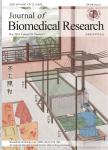Individual differences in transcranial electrical stimulation current density
Individual differences in transcranial electrical stimulation current density作者机构:Aaken Research Institute Inc. Sutter Center for Psychiatry Brain Image Analysis LLC Radiological Associates of Sacramento Inc. Stratovan Corp.
出 版 物:《The Journal of Biomedical Research》 (生物医学研究杂志(英文版))
年 卷 期:2013年第27卷第6期
页 面:495-508页
学科分类:0710[理学-生物学] 1001[医学-基础医学(可授医学、理学学位)] 10[医学]
基 金:supported by the Sutter Institute for Medical Research the Aaken Research Institute
主 题:RI modeling current density transcranial-stimulation tDCS
摘 要:Transcranial electrical stimulation (TCES) is effective in treating many conditions, but it has not been possible to accurately forecast current density within the complex anatomy of a given subject's head. We sought to predict and verify TCES current densities and determine the variability of these current distributions in patient-specific models based on magnetic resonance imaging (MRI) data. Two experiments were performed. The first experiment estimated conductivity from MRIs and compared the current density results against actual measurements from the scalp surface of 3 subjects. In the second experiment, virtual electrodes were placed on the scalps of 18 subjects to model simulated current densities with 2 mA of virtually applied stimulation. This procedure was repeated for 4 electrode locations. Current densities were then calculated for 75 brain regions. Comparison of modeled and measured external current in experiment 1 yielded a correlation of r = .93. In experiment 2, modeled individual differences were greatest near the electrodes (ten-fold differences were common), but simulated current was found in all regions of the brain. Sites that were distant from the electrodes (e.g. hypothalamus) typically showed two- fold individual differences. MRI-based modeling can effectively predict current densities in individual brains. Significant variation occurs between subjects with the same applied electrode configuration. Individualized MRI- based modeling should be considered in place of the 10-20 system when accurate TCES is needed.



